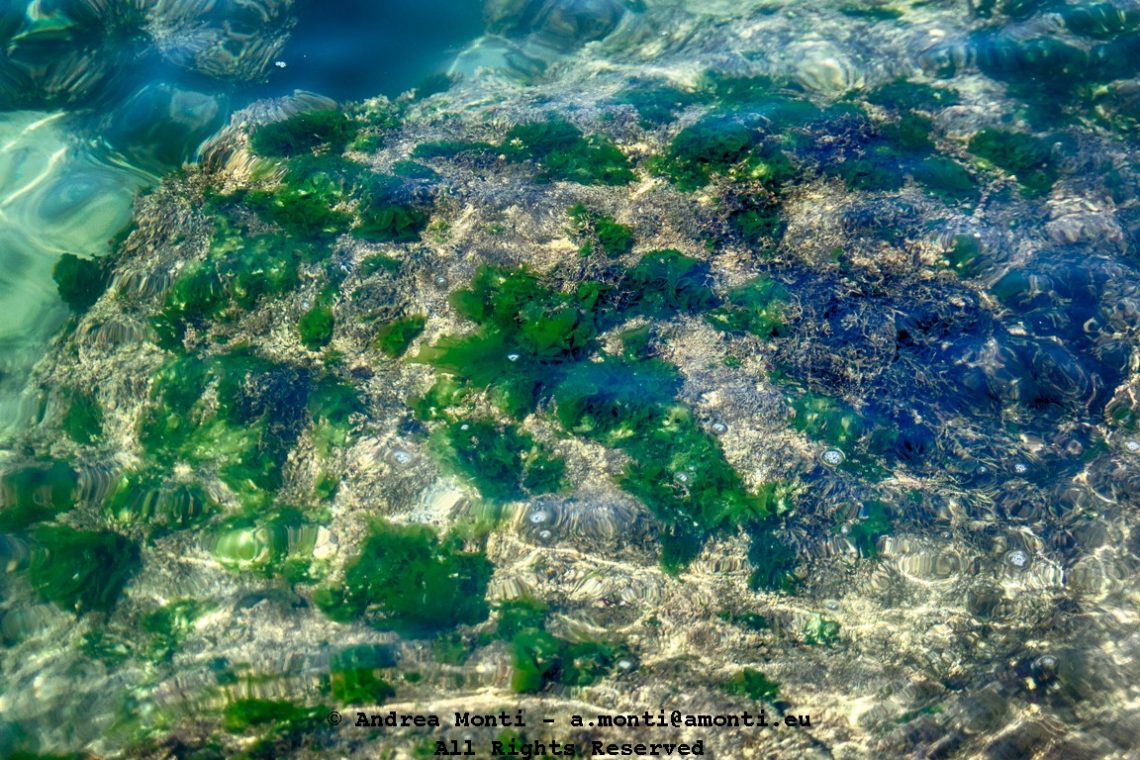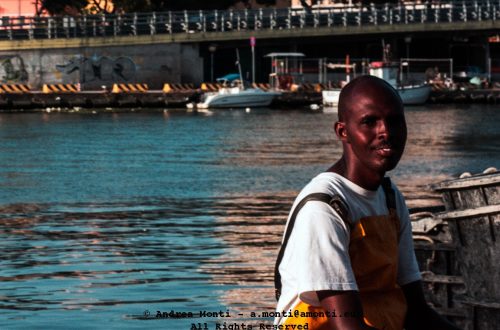
Under The Rocks
I made this photo from a pier, camera pointed straight down. No filter, no polariser — just sun, salt, and a moment of stillness on the surface. Below, the usual tangle of seaweed and barnacles on stone, but what caught me wasn’t the marine life — it was the way the water rearranged the image as I watched. Distortion became a kind of painterly gesture.
The composition is almost accidental. I didn’t frame with precision — I let the edges fall where they would. The stone fills the middle, but it’s the border between water and air, between visibility and motion, that gives the photo its tension. You’re not just looking through the water — you’re watching the water draw over it.
Exposure leaned bright. I exposed for the highlights dancing on the ripples, letting the darker algae go deep. Nothing clipped, but I let the colours saturate — greens pushed to their limits, blues sliding into teal, everything alive with movement even in stillness. The sharpness isn’t clinical; the surface breaks it up just enough to introduce ambiguity. Is this underwater, or above?
Technically, it’s simple: fast shutter, mid-aperture, low ISO. The clarity came from the conditions, not the gear. No correction was needed — the colours were real. If anything, I pulled them back slightly to avoid overstatement. But this wasn’t about accuracy. It was about how the sea reinterprets its own textures.
It’s a landscape reduced to abstraction. No horizon, no scale — just colour, light, movement. And the rock beneath it all, still.




